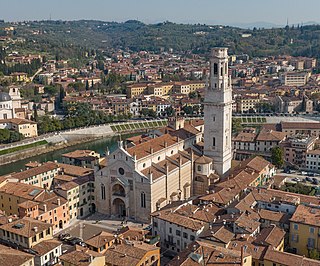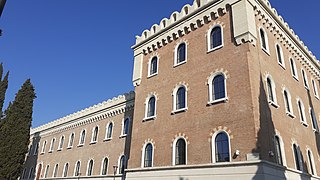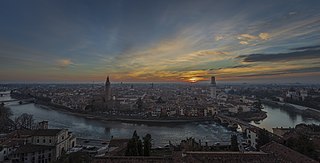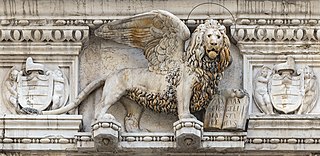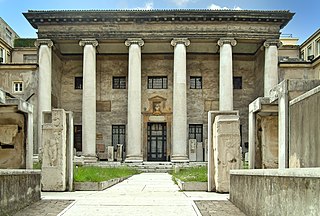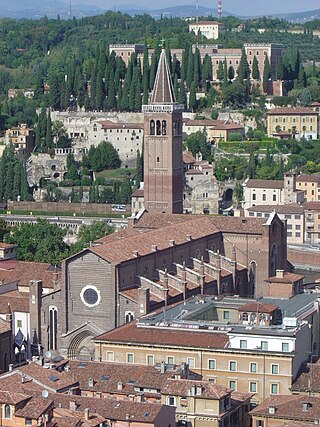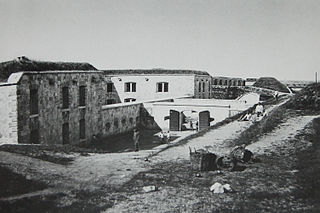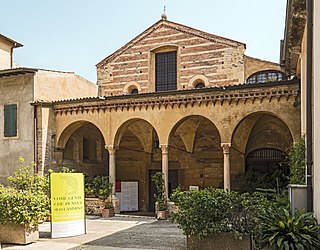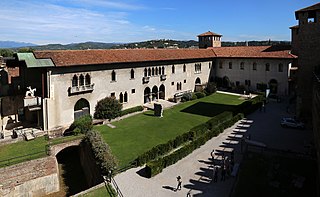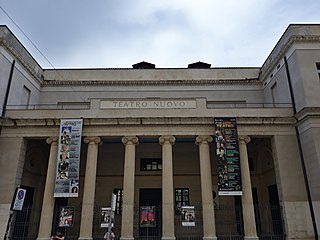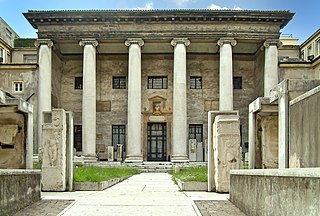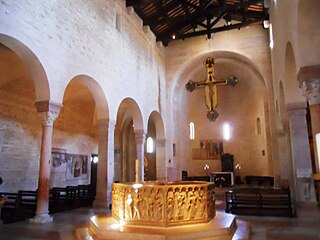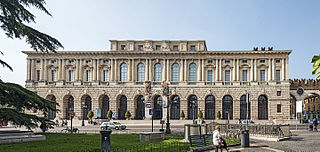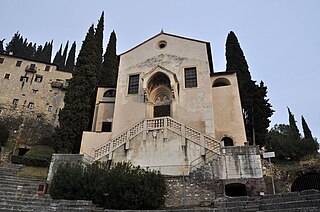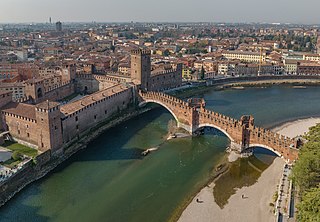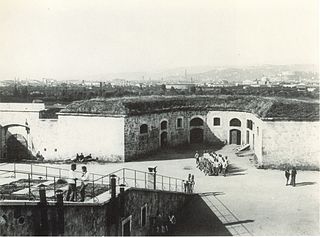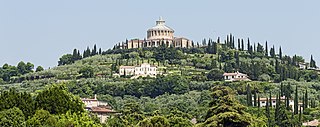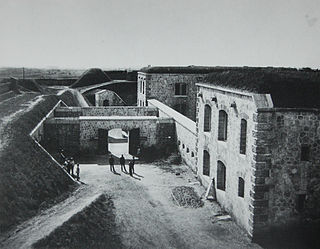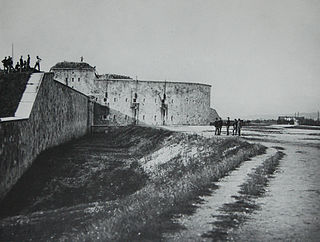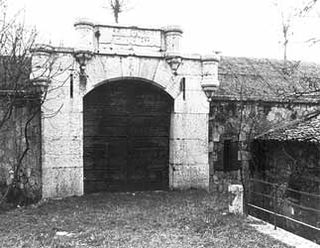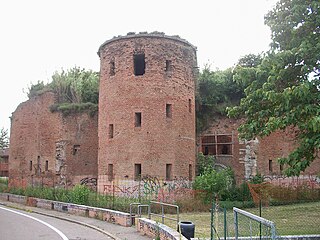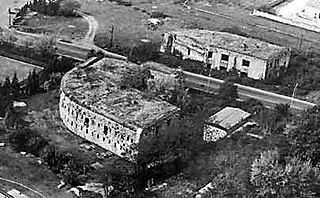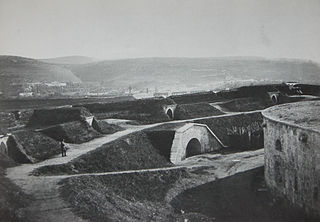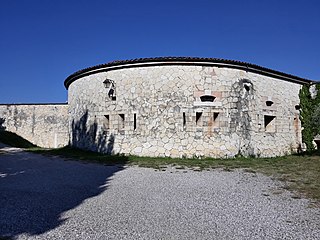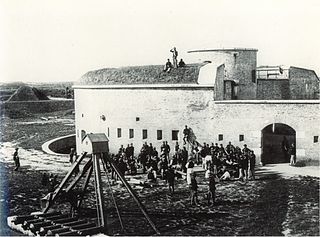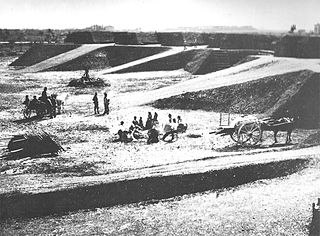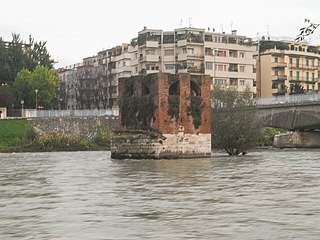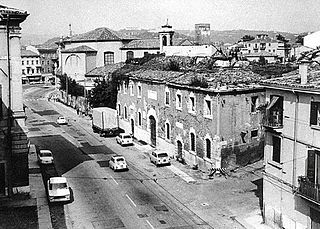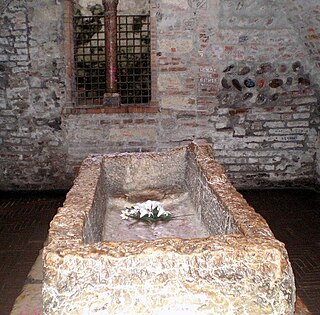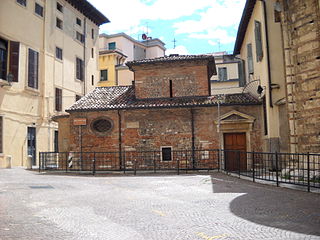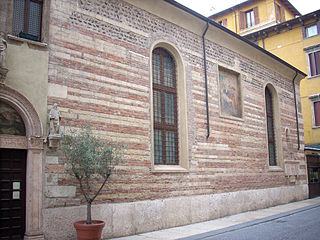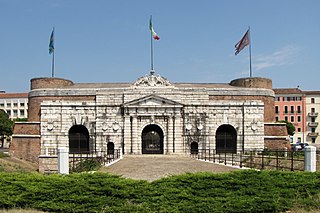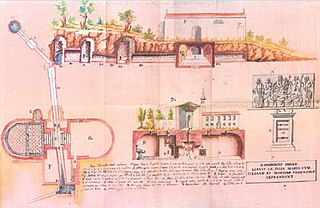54 Sights in Verona, Italy (with Map and Images)
Legend
Premium Sights
Book tickets, guided tours and activities in Verona.
Guided Free Walking Tours
Book free guided walking tours in Verona.
Welcome to your journey through the most beautiful sights in Verona, Italy! Whether you want to discover the city's historical treasures or experience its modern highlights, you'll find everything your heart desires here. Be inspired by our selection and plan your unforgettable adventure in Verona. Dive into the diversity of this fascinating city and discover everything it has to offer.
Sightseeing Tours in VeronaActivities in Verona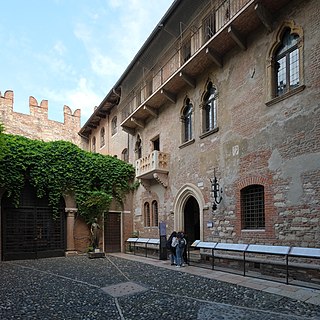
Juliet's House is a medieval civil building located in Via Cappello in Verona, a short distance from the central Piazza delle Erbe. It is one of the Shakespearean places in Verona, together with Juliet's tomb and Romeo's house, linked to the universal and positive ideal of love and for this reason it has become the destination of a secular and popular pilgrimage, so much so that it is the most visited monument in the city.

The Arco dei Gavi is an ancient structure in Verona, northern Italy, situated at the beginning of the Via Postumia, just outside the Roman walls of the city. Built to celebrate the gens Gavia, a noble Roman family who had their hometown in Verona, the Arco dei Gavi is a very rare example of a privately funded monumental Roman arch.
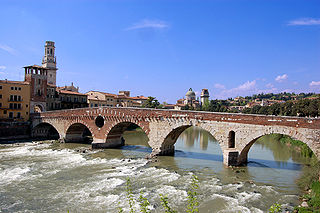
The Ponte Pietra is a Roman arch bridge crossing the Adige River in Verona, Italy. The bridge was completed in 100 BC, and the Via Postumia from Genoa to Aquileia passed over it. It is the oldest bridge in Verona.
Verona Cathedral is a Roman Catholic cathedral in Verona, northern Italy, dedicated to the Blessed Virgin Mary under the designation Santa Maria Matricolare. It is the episcopal seat of the Diocese of Verona.
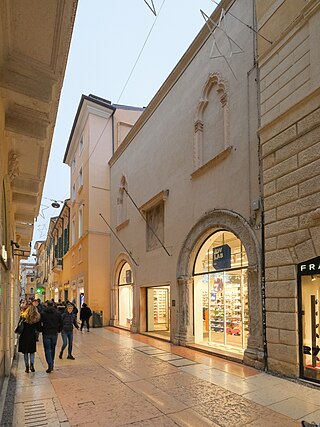
Palazzo Giusti is a civil building located on the corner of Via Mazzini and Via Scala in Verona. It was built in the second half of the fifteenth century on commission from the Giusti family and is characterized by a mixture of late Gothic and Renaissance styles. A substantial portion, however, became part of Palazzo Sambonifacio and was completely renovated in the eighteenth century to a design by Adriano Cristofali.
The Treasury barracks of Castel San Pietro or more simply Castel San Pietro, originally called Aerarialcasernen Castel San Pietro, is a military building located on the San Pietro hill in Verona, in an elevated point and characterized by a wide panoramic view of the city of Verona, and for this reason a privileged destination for tourists and Veronese who can also reach the square in front of the castle via the Castel San Pietro funicular. The building was designed by the Austrian k.k. Genie-Direktion Verona stationed in the city and built between 1852 and 1858, when the remains of the curtain wall of the pre-existing castle, built at the end of the fourteenth century, were also restored.
7. Verona
Verona is a city on the River Adige in Veneto, Italy, with 258,031 inhabitants. It is one of the seven provincial capitals of the region, and is the largest city municipality in the region and in northeastern Italy. The metropolitan area of Verona covers an area of 1,426 km2 (550.58 sq mi) and has a population of 714,310 inhabitants. It is one of the main tourist destinations in Northern Italy because of its artistic heritage and several annual fairs and shows as well as the opera season in the Arena, an ancient Roman amphitheater.
8. Leone della Serenissima - Piazza Erbe
The Lion of Saint Mark, representing Mark the Evangelist, pictured in the form of a winged lion, is an aspect of the Tetramorph. On the pinnacle of St Mark's Cathedral he is depicted as holding a Bible, and surmounting a golden lion which is the symbol of the city of Venice and formerly of the Venetian Republic.
9. Basilica of San Zeno
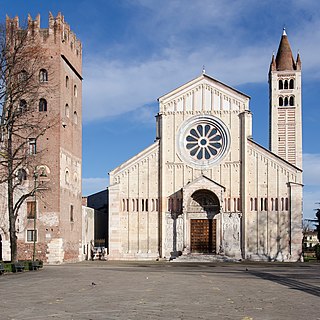
The Basilica di San Zeno is a minor basilica of Verona, northern Italy constructed between 967 and 1398 AD. Its fame rests partly on its Romanesque architecture and partly upon the tradition that its crypt was the place of the marriage of Shakespeare's Romeo and Juliet.
Wikipedia: Basilica of San Zeno, Verona (EN), Wikipedia De, Wikipedia En, Wikipedia Fr, Wikipedia Es
10. Museo archeologico al Teatro Romano

The archaeological museum at the Roman theater is a large museum complex located in the Veronetta district of Verona, near the bend of the Adige river; it consists of Palazzo Fontana, which serves as the entrance to the large area, the archaeological site of the Roman theater of Verona and the museum itself, located in the fifteenth-century convent of the Gesuati.
Wikipedia: Museo archeologico al teatro romano (IT), Website
11. Arsenale Austriaco
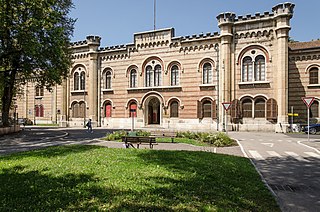
The Campagnola artillery arsenal, originally called artillerie arsenal Franz Josef I but better known as the arsenal of Verona or Austrian arsenal of Verona, is a military establishment built by the Austrian Empire in Verona, now located in the district of Borgo Trento. The preliminary studies and the elaboration of the project, commissioned by Field Marshal Josef Radetzky, were held in 1854 with the choice of the executive project by Major Conrad Petrasch, director of the Genie-Direktion of Verona. The construction of the arsenal was completed in 1861 according to the reduced project of 1859.
12. Maffei Museum
The Maffeian lapidary museum, founded in the first half of the eighteenth century by the Veronese scholar Scipione Maffei, is one of the oldest European public museum institutions, located in the heart of the historic center of Verona, within the municipal walls, overlooking Piazza Bra and a few steps from the Arena di Verona.
13. Chiesa di Sant'Anastasia
The chiesa di Sant'Anastasia, or the Basilica of Saint Anastasia is a church built by the Dominican Order in Verona, northern Italy. In Gothic style, it is the largest church in the city, located in its most ancient district, near the Ponte Pietra.
14. Forte Dossobuono
Fort Dossobuono, originally called Werk Erzherzogin Gisela, is a fortification located south-west of Verona, part of the city's complex defensive system and more particularly of the second entrenched field of the plain, put in place between 1859 and 1866. The fortified structure was built between 1860 and 1861 and the works were directed by the Imperial Royal Office of Fortifications of Verona.
15. Centro Internazionale di fotografia Scavi Scaligeri

The Scavi Scaligeri international photography center is an underground exhibition space that was created within an archaeological site that came to light between 1981 and 1983, in which photographic exhibitions were hosted since 1996, as well as thematic workshops, educational itineraries, photography courses, shows and readings. The exhibition activities were suspended on 11 May 2015 to allow the restoration of the Palazzo del Capitanio; In the meantime, the promotion of photography continues within the other city museums, waiting for the reopening of the center.
Wikipedia: Centro internazionale di fotografia Scavi Scaligeri (IT), Website
16. Chiesa di Sant'Elena
The church of Sant'Elena, formerly the church of Saints George and Zeno, is a Catholic place of worship located in the heart of the historic center of Verona, adjacent to the Cathedral; it is part of the diocese of Verona.
17. Loggia di Frà Giocondo
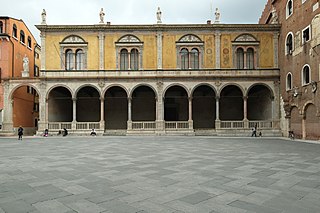
The Loggia del Consiglio, also known as the Loggia di Fra Giocondo from the name of the humanist friar Giovanni Giocondo, who for a long time was believed to be the designer of the building, is a significant episode in Veronese architecture of the second half of the fifteenth century. The loggia, which is located in Piazza dei Signori, in the heart of Verona, was a representative building commissioned by the leaders of the Municipality for the sessions of the Fatherland Council, and is currently the seat of the offices of the Province of Verona.
18. Museo di Castelvecchio
Castelvecchio Museum is a museum in Verona, northern Italy, located in the eponymous medieval castle. Restoration by the architect Carlo Scarpa between 1959 and 1973 has enhanced the appearance of the building and exhibits. Scarpa's architectural style is visible in the details for doorways, staircases, furnishings, and even fixtures designed to hold a specific piece of artwork. The renovation carefully balanced new and old, revealing the history of the original building where appropriate. Unusual at the time, this approach has now become a common approach to renovation.
19. Teatro Nuovo
The Teatro Nuovo, in addition to being one of the main Italian theaters, is also the second opera house in Verona and the Veneto region. It is mainly used for prose performances, and is used less and less for musical works or conferences.
20. Teatro Filarmonico
The Teatro Filarmonico is the main opera theater in Verona, Italy, and is one of the leading opera houses in Europe. The Teatro Filarmonico is property of the Accademia Filarmonica di Verona. Having been built in 1716, and later rebuilt after a fire of January 21, 1749, and again after the allied bombing of February 23, 1945.
21. Battistero di San Giovanni in Fonte
The baptistery of San Giovanni in Fonte, also simply called the church of San Giovanni in Fonte, is a Catholic place of worship located in the heart of the historic center of Verona, adjacent to the Cathedral; it is part of the diocese of Verona.
Wikipedia: Battistero di San Giovanni in Fonte (Verona) (IT)
22. Palazzo della Gran Guardia
The Gran Guardia is a civil building that delimits the southern side of Piazza Bra in Verona, whose construction began in the seventeenth century and ended, after a long pause, only in 1853. With its size and monumentality it manages to compete with the Arena, which is located a few tens of meters away, beyond the nineteenth-century Bra gardens.
23. Chiesa dei Santi Siro e Libera
The church of Saints Siro and Libera is a Catholic place of worship located in the Veronetta district of Verona, within the archaeological site where the Roman theater and the museum of the same name are located; it is part of the diocese of Verona.
24. Case Mazzanti
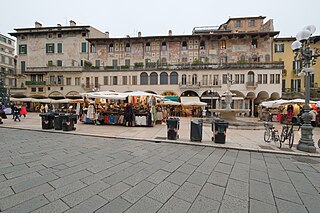
The Mazzanti houses are a group of terraced buildings that overlook the north-east side of Piazza delle Erbe in Verona, characterized by facades frescoed in the sixteenth century by Alberto Cavalli, a pupil of the most famous Renaissance architect and painter Giulio Romano.
25. Ponte Scaligero
The Castel Vecchio Bridge or Scaliger Bridge is a fortified bridge in Verona, northern Italy, over the Adige River. The segmental arch bridge featured the world's largest span at the time of its construction.
26. Chiesa di San Zeno in Oratorio
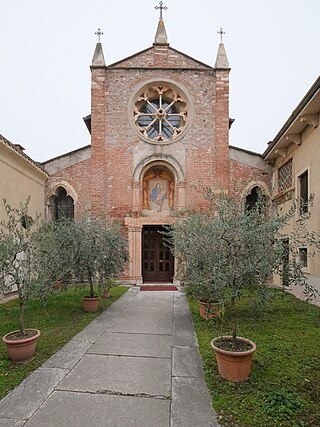
The church of San Zeno in Oratorio, also known as the church of San Zenetto, is a Catholic place of worship located in the San Zeno district of Verona, a few steps from Castelvecchio; it is part of the diocese of Verona.
27. Forte Santa Caterina
Fort Santa Caterina, originally called Werk Hess, is a fortification located south of Verona, part of the city's complex defensive system and more particularly of the first entrenched camp on the plain, put in place between 1848 and 1856. The fortified structure was built between 1850 and 1852 and the works were supervised by the director of the Imperial Royal Office of Fortifications of Verona, Major Conrad Petrasch. Its name in Italian derives from the pre-existing chapel dedicated to the Sienese saint, located along the road that led from the sixteenth-century lazaret of San Pancrazio to Porta Nuova, but it was then officially named after Baron Heinrich von Hess, artillery general and chief of staff in the army of Josef Radetzky, as well as a signatory of the armistice of Salasco.
28. Area archeologica di Corte Sgarzarie
The Capitolium of Verona was a complex that was part of the area of the Forum of the Roman city, corresponding to today's Piazza delle Erbe. Parts of the cryptoporticus are visible and can be visited under the loggia of Corte Sgarzerie, in the crypt of the church of San Benedetto al Monte and under Palazzo Maffei.
29. Forte San Leonardo
Fort San Leonardo, originally called Werk San Leonardo, was a fortification located on the hills north-west of Verona, part of the complex city defensive system and more particularly of the sector of hill forts and advanced plain forts, put in place between 1837 and 1843. The fortified structure was built in 1838 and the works were directed by the director of the Imperial Royal Office of Fortifications of Verona, the German major general Franz von Scholl. In the second half of the twentieth century the structure was profoundly transformed to house the church of Our Lady of Lourdes, a subsidiary part of the diocese of Verona.
30. Forte Lugagnano
Forte Lugagnano, originally called Werk Kronprinz Rudolf, is a fortification located west of Verona, part of the city's complex defensive system and more particularly of the second entrenched field of the plain, put in place between 1859 and 1866. The fortified structure was built between 1860 and 1861 and the works were directed by the Imperial Royal Office of Fortifications of Verona.
31. Forte Chievo
Forte Chievo, originally Werk Kaiser Franz Josef, is a fortification located west of Verona, part of the complex city defensive system and more particularly of the first entrenched field of the plain, put in place between 1848 and 1856. The fortified structure was built between 1850 and 1852 and the works were supervised by the director of the Imperial Royal Office of Fortifications of Verona, Major Conrad Petrasch.
32. Forte Azzano
Forte Azzano, originally called Werk Neu Wratislaw, is a fortification located south of Verona, part of the complex city defensive system and more particularly of the second entrenched field of the plain, put in place between 1859 and 1866. The fortified structure was built between 1860 and 1861 and the works were directed by the Imperial Royal Office of Fortifications of Verona.
33. Forte San Zeno
Fort San Zeno, originally called Werk Radetzky, was a fortification located west of Verona, part of the city's complex defensive system and more particularly of the first entrenched field on the plain, commissioned by Austrian Field Marshal Josef Radetzky and put in place between 1848 and 1856.
34. Museo e pinacoteca Canonicale
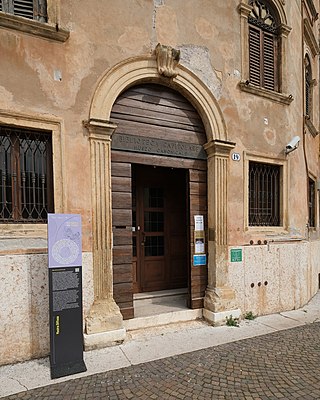
The Canonical Museum is set up in the architectural complex of the Cathedral of Verona and can be accessed from Piazza Duomo. In it there are collections of archaeological materials from pre-existing Roman buildings and early Christian basilicas, sacred furnishings and valuable sculptures and paintings dating from the twelfth to the nineteenth century.
35. Castel San Felice
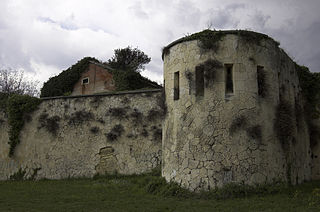
Castel San Felice is a fortification located north of Verona, along the city's magistral walls, in which numerous construction phases have followed one another over the centuries, the last of which was in the first half of the nineteenth century, when it was restored and adapted to the new defensive needs by the Imperial Royal Office of Fortifications of Verona.
36. Chiesa di Santa Maria Antica
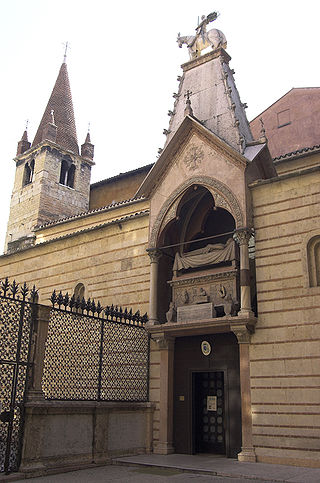
Santa Maria Antica is a Roman Catholic church in Verona, Italy. The current church is Romanesque in style and dates to 1185, rebuilt after the earthquake of 1117 destroyed the original building that dated back to the end of the period of Lombard domination in the 7th century. The only surviving remains of the 7th-century building is a fragment of black and white mosaic floor.
37. Forte San Mattia
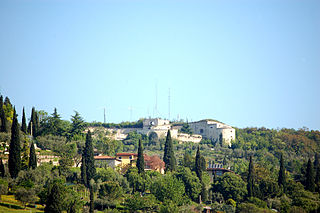
Fort San Mattia, originally called Werk San Mattia, is a fortification located on the hills north of Verona, part of the complex city defensive system and more particularly of the sector of hill forts and advanced plain forts, put in place between 1837 and 1843. The fortified structure was built in 1843 and the work was directed by the director of the Imperial Royal Office of Fortifications of Verona, the German major general Franz von Scholl, together with his pupil Michael von Maly.
38. Forte Tomba
Forte Tomba, originally called Werk Stadion, is a fortification located south of Verona, part of the city's complex defensive system and more particularly of the second entrenched camp on the plain, put in place between 1859 and 1866. The fortified structure was built between 1860 and 1861 and the works were directed by the Imperial Royal Office of Fortifications of Verona. In the early fifties of the twentieth century, to give work to the unemployed, the earth works of the fort were completely flattened, filling the ditch, while in the following years the redoubt was gutted to rectify the road coming from Ostiglia; finally, the state of conservation of the fort further worsened in the nineties, when the junction of the southern ring road was built.
39. Forte Parona
Fort Parona, originally called Werk Erzherzog Albrecht, is a fortification located north-west of Verona, part of the complex city defensive system and more particularly of the second entrenched field of the plain, put in place between 1859 and 1866. The fortified structure was built between 1859 and 1860 and the works were directed by the Imperial Royal Office of Fortifications of Verona. The structure was hit by an Allied air raid in 1944, towards the end of World War II, which caused the explosion of the explosive depots contained therein, reducing it to complete ruins. Only the remains of the embankment and the moat remain, completely invaded by vegetation.
40. Forte Biondella
Forte Biondella, originally called Werk Biondella, is a fortification located on the hills north-east of Verona, part of the complex city defensive system and more particularly of the sector of hill forts and advanced plain forts, put in place between 1837 and 1843. The fortified structure was built in 1838 and the works were directed by the director of the Imperial Royal Office of Fortifications of Verona, the German major general Franz von Scholl.
41. Forte Porta Nuova
Forte Porta Nuova, originally called Werk Clam, was a fortification located south of Verona, part of the city's complex defensive system and more particularly of the first entrenched field on the plain, put in place between 1848 and 1856. The fort was built between 1848 and 1850 and completed the detached wall at Carnot and three caponiers in 1859; the work was supervised by the director of the Imperial Royal Office of Fortifications of Verona, Major Conrad Petrasch.
42. Forte Fenilone
Forte Fenilone, originally called Werk d'Aspre, was a fortification located south-west of Verona, part of the city's complex defensive system and more particularly of the first entrenched field of the plain, put in place between 1848 and 1856. The fort was built in three different phases: in 1848 the embankment, the moat and the rampart were laid, in 1849 the redoubt was built and in 1859 the gorge front was closed and the detached wall at Carnot with its caponieres was built. The usefulness of the fort, however, declined already after 1861, following the construction of the most advanced line of the second entrenched camp, although it maintained the function of security against infantry infiltration. The work was supervised by the director of the Imperial Royal Office of Fortifications of Verona, Major Conrad Petrasch.
43. Torre della Catena
The Torre della Catena is a military building built during the fourteenth century on the bed of the Adige as part of the Scaliger defensive system of the city of Verona. The tower, now in disuse, is located between the Catena bridge and the Risorgimento bridge.
44. Carcere degli Scalzi
The Prison of the Discalced was a convent of the Order of Discalced Carmelites adjacent to the church of the Discalced in Verona, built between 1666 and 1750, suppressed in 1806 by Napoleonic decree and used as a prison from 1883 to 1945.
45. Tomba di Giulietta
Juliet's tomb is located in Verona inside the former convent of the Capuchin friars dating back to the thirteenth century, now the "G.B. Cavalcaselle" Museum of Frescoes. Tradition and imagination have it that it is the burial place of Juliet Capulet, protagonist of William Shakespeare's Romeo and Juliet.
46. Chiesa di Sant'Eufemia
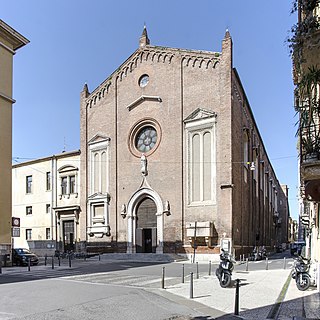
The church of Sant'Eufemia is a Catholic place of worship located in the heart of Verona's historic center. It straddles an ancient Roman cardo, where a church building probably already existed in the 6th century. The foundation of the present church is owed to the Della Scala family, who brought Augustinian hermit monks to Verona in 1262 so that they could be closer to the community and granted them permission to build a monastery, located at the time in the Capitani quarter of the Scaliger city. Through bequests and donations, particularly that of Alberto della Scala, the building could be consecrated in 1331 by the bishop of Verona Nicolò. The building activity, however, did not end, and in the following years the monastery's rooms continued to be expanded in order to accommodate the increasing number of monks who arrived there attracted by the great prestige the community boasted. A permit granted by Mastino II della Scala in 1340 made it possible to further enlarge the church by building the vast apse that still distinguishes it today. From the end of the fourteenth century work continued on the various chapels and minor altars.
47. Saint Apostles' Church
Santi Apostoli, and the adjacent Romanesque style, small church (chiesetta) or chapel of the Sante Teuteria e Tosca, is an ancient Roman Catholic church in front of a piazza off Corso Cavour, in central Verona, region of Veneto, Italy.
48. Chiesa di San Giovanni in Foro
The church of San Giovanni in Foro in Verona, is located on Corso Magenta, near the Piazza Erbe, the site of the ancient Roman Forum on Corso Porta Borsari. A church at this site was gravely damaged during the fire that swept medieval Verona in 1172. During restorations in the early 1900s, it was found that Roman walls had been incorporated into the external walls of the church. The base of the bell-tower dates from the 14th century. The renaissance portal of the church was sculpted by Gerolamo Giolfino with statues of Saints John the Evangelist, Peter, and John the Baptist. The fresco in the niche depicting St John was completed by Nicola Giolfino. The 3 baroque bells are rung with the Veronese bellringing art.
49. Porta Nuova
Porta Nuova is a gateway to the historic center of Verona, built between 1532 and 1540. It was designed by architect Michele Sanmicheli. Giorgio Vasari remarked on the gateway in his work Le vite de' più eccellenti pittori, scultori e architettori, stating that it was "never before any other work of more grandeur or better design."
50. Chiesa di San Nicolò
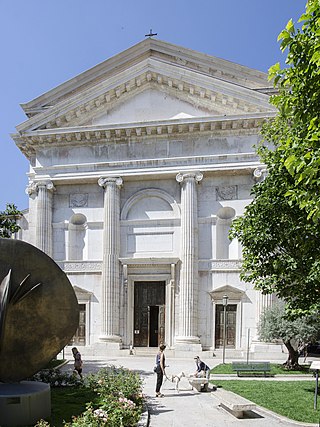
The church of San Nicolò all'Arena is a Catholic place of worship located in the heart of the historic center of Verona, behind the Roman amphitheater; it is a parish church that is part of the vicariate of Verona Centro in the diocese of the same name.
51. Palazzo Miniscalchi Erizzo
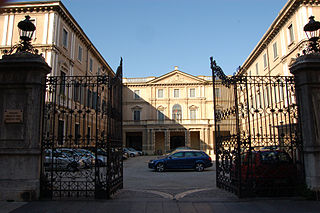
The Miniscalchi Erizzo building is a civil building located in the heart of the historic center of Verona, located on the corner of Via San Mammaso, along which the medieval part of the building stands, and Via Giuseppe Garibaldi, where the courtyard of honor and the nineteenth-century extension open. Since 1990 the building has been open to the public and transformed into a house-museum, with the name of Miniscalchi-Erizzo Museum Foundation.
52. Santuario di Santa Teresa di Gesù Bambino
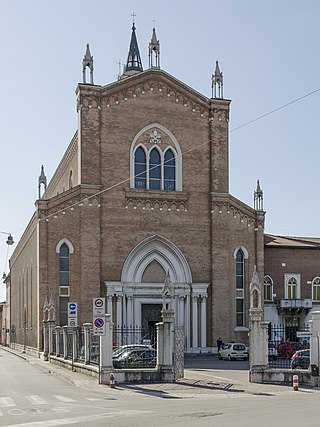
The church of Santa Teresa del Bambin Gesù is a Catholic place of worship located in the Borgo Roma district of Verona; it is a parish church that is part of the vicariate of Verona Sud in the diocese of the same name, entrusted to the Discalced Carmelites. On 26 April 1938 it was elevated to the dignity of minor basilica, while in 1967 the bishop of Verona Giuseppe Carraro established the Teresian Basilica-Sanctuary.
53. Chiesa dei Padri Filippini
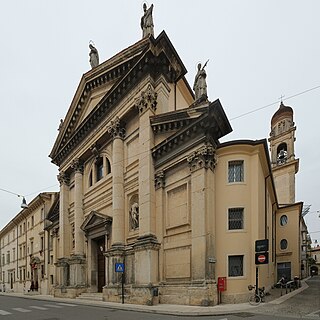
The church of San Fermo Minore di Brà, better known as the church of the Filippini, is a Catholic place of worship located in the heart of the historic center of Verona; it is a parish church that is part of the vicariate of Verona Centro in the diocese of the same name.
Wikipedia: Chiesa dei Santi Fermo e Rustico dei Filippini (IT)
54. Pantheon di Santa Maria in Stelle
The hypogeum of Santa Maria in Stelle, commonly known as the pantheon of Santa Maria in Stelle, is an archaeological site located in the hamlet of the same name in the municipality of Verona, at the beginning of Valpantena. It is an underground structure that is difficult to interpret, built in the third century probably with the function of a funerary monument, although it could also have been used as an aqueduct or nymphaeum to capture the waters of an underground spring. Starting from the fourth century, the space was used as a chapel for Christian worship, an intended use that it maintained until the twelfth century. The structure was rediscovered in the eighteenth century, as documented by the reliefs of Gaetano Cristofali.
Share
How likely are you to recommend us?
Disclaimer Please be aware of your surroundings and do not enter private property. We are not liable for any damages that occur during the tours.
